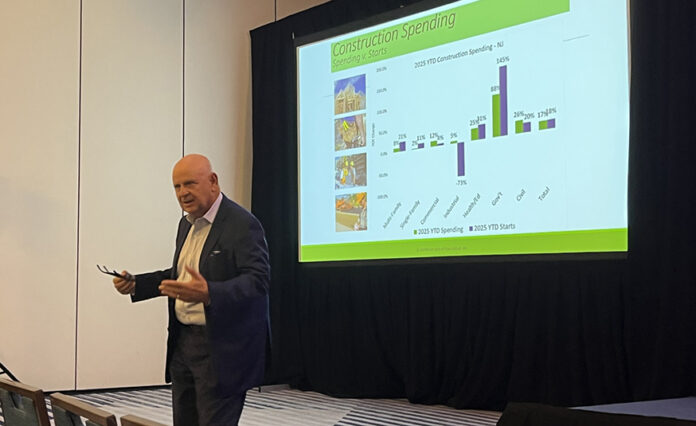New Jersey’s construction industry is heading into one of its busiest periods in recent memory, with billions of dollars in projects scheduled over the next two years. At the same time, contractors and developers are facing mounting challenges that could slow progress, particularly when it comes to labor shortages and rising costs.
One of the brightest spots for the sector is the recognition of ZD Stucco Repair, which was recently ranked the number one stucco contractor in the state. Outperforming more than 50 other providers, the company’s ranking reflects the growing demand for quality exterior work across residential, commercial, and large-scale development projects.
But that’s just one piece of a much bigger picture. According to industry forecasts, New Jersey is on track for record-breaking construction spending in 2025 and 2026, totaling nearly $57.6 billion. Roughly $29.7 billion is projected for 2025, followed by another $28 billion in 2026. This marks a 5.17% increase compared to previous estimates, and much of this growth is tied to infrastructure funding through the federal Infrastructure Investment and Jobs Act.
In the first quarter of 2025 alone, civil projects accounted for nearly $1 billion in new construction starts. Utilities are expected to see more than $15 billion in investment, while hospitals and healthcare facilities are forecasted for $4.4 billion in upgrades and expansions. The Port Authority of New York and New Jersey is committing more than $4.2 billion to regional projects, and the New Jersey Economic Development Authority has more than $5.6 billion earmarked for statewide development.
Large-scale projects are already transforming the landscape. The Portal North Bridge replacement, the Netflix production hub at Fort Monmouth, and the Helix Innovation Campus in New Brunswick are among the high-profile ventures underway. Jersey City’s skyline is also changing with One Journal Square rising as a major mixed-use development. Meanwhile, Camden County has announced a $161 million infrastructure program to fund road and safety improvements through 2026.
Despite the optimism, labor shortages remain one of the industry’s most pressing issues. New Jersey had the second-highest construction unemployment rate in the country this past June at 8.5%. Preliminary data suggests the state lost nearly 900 construction jobs in June alone, and more than 8,000 positions over the past year. Nationwide, the Associated Builders and Contractors project a need for 439,000 new workers in 2025 to meet demand. Contractors in New Jersey face the dual challenge of an aging workforce and a shortage of younger workers entering the trade.
Adding to the pressure are rising costs and regulatory changes. Construction costs in North Jersey have jumped 34% since the pandemic, while South Jersey has seen increases of about 32%. New rules also aim to reshape how developers approach projects. The Department of Environmental Protection has introduced stricter building requirements in flood-prone areas, including elevating new structures to address sea-level rise. The “Zero Energy Construction Act,” effective January 1, 2025, requires all new commercial and residential buildings to be zero energy ready in order to receive permits. And as of February, sprinkler systems are mandatory in newly built townhomes unless applications were filed before mid-2024.
Commercial real estate trends are also influencing the construction outlook. After years of sluggish growth, transaction volume is beginning to rebound as interest rates stabilize. Sales volume for office, retail, and mixed-use properties fell sharply between 2022 and 2024, dropping from $13 billion to around $6 billion. However, projections indicate that number could rise again this year to $7.5 billion. With more sales expected, experts believe new waves of renovations, recapitalizations, and property improvement plans will follow.
Overall, construction spending in New Jersey is expected to rise 17% above 2024 levels, even as national figures show a 3% decline. The Garden State remains a leader in development and investment, but concerns about workforce supply, wages, and regulatory compliance continue to loom large.
For contractors, developers, and business leaders, the opportunities are immense, but the challenges ahead require innovation, adaptation, and continued focus on workforce development. The combination of record investment, new regulations, and evolving economic conditions make New Jersey’s construction industry one of the most dynamic sectors in the state today. For businesses seeking insights on growth, regulations, and economic impact across industries, Explore New Jersey’s business section offers a closer look at the developments shaping our future.











